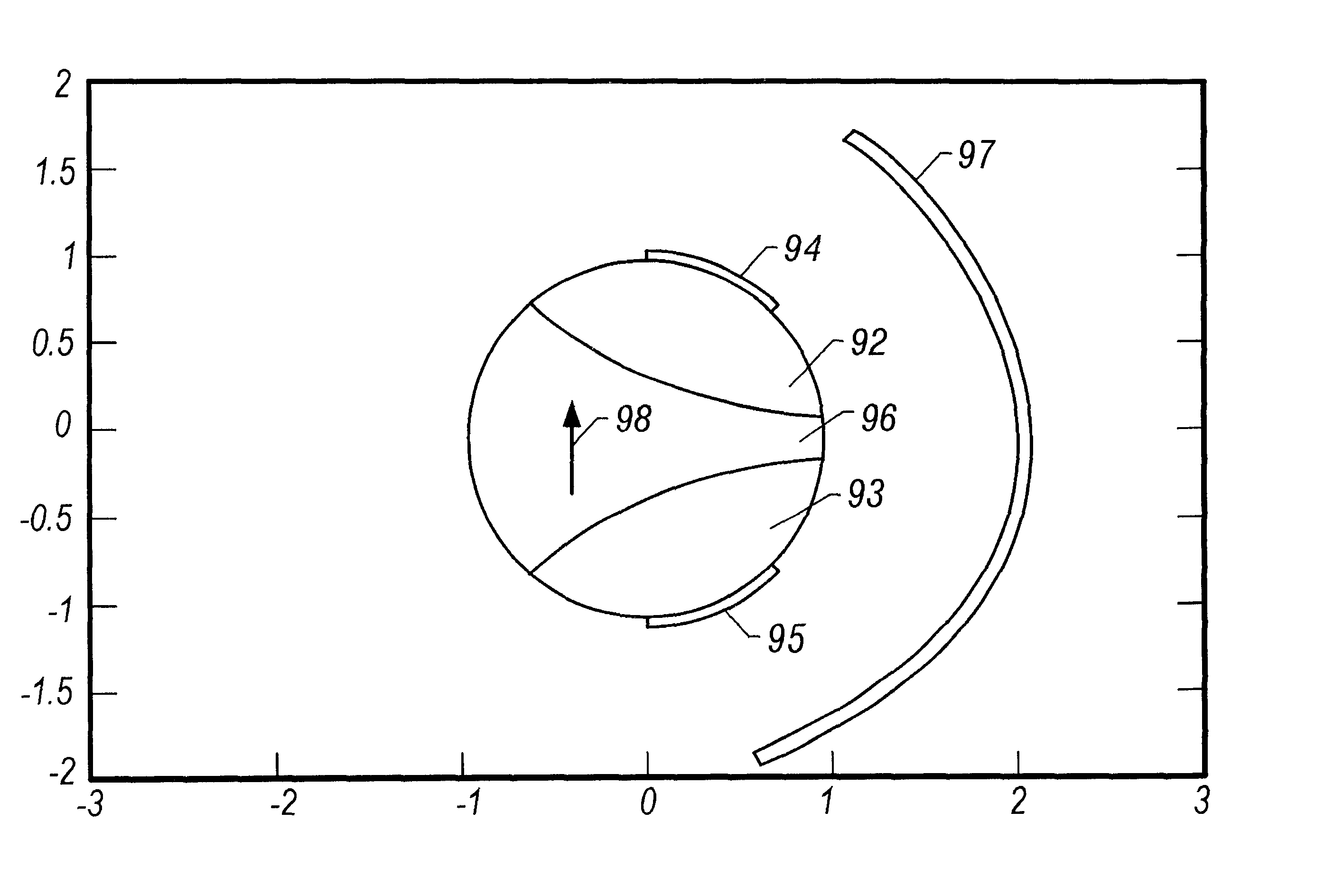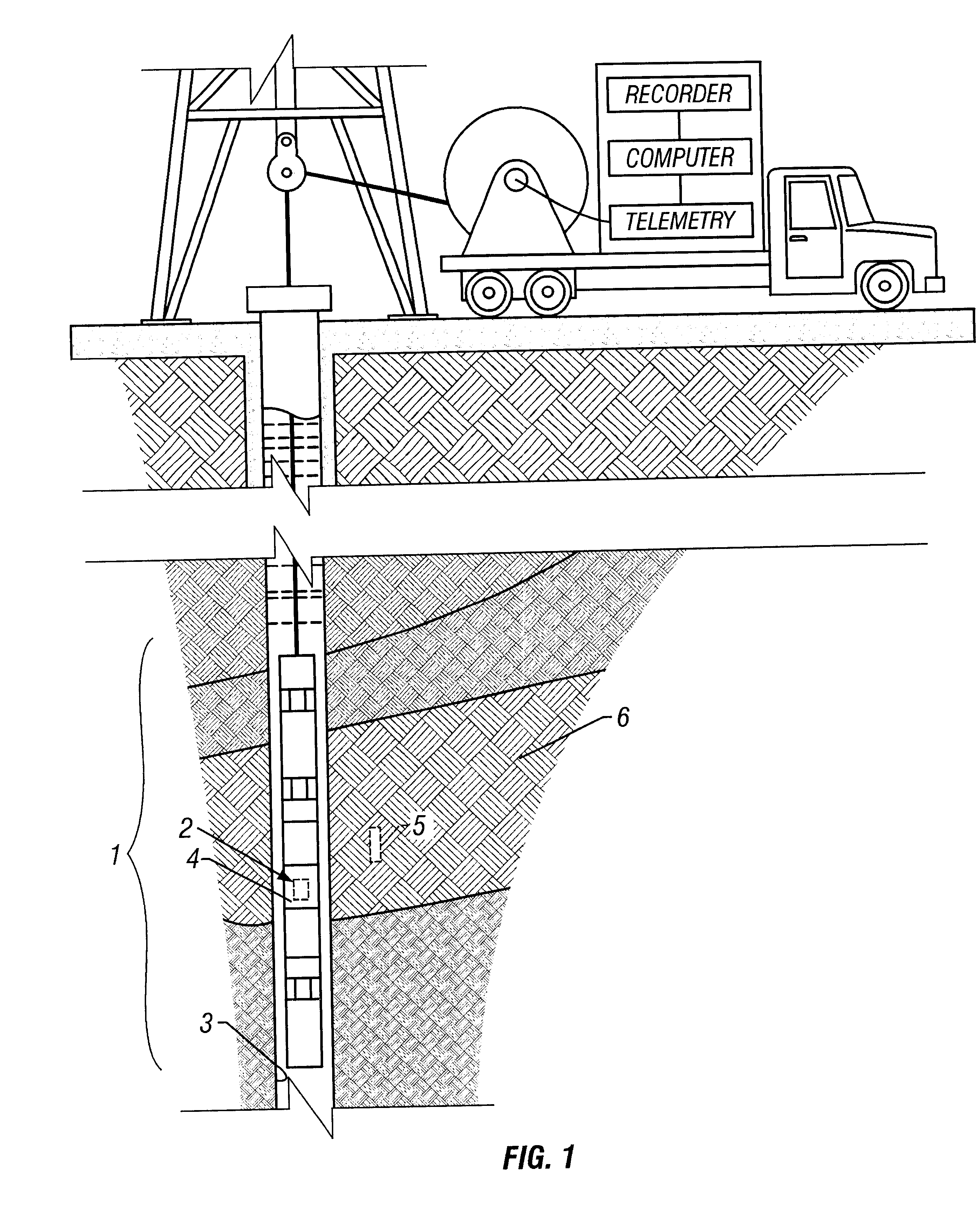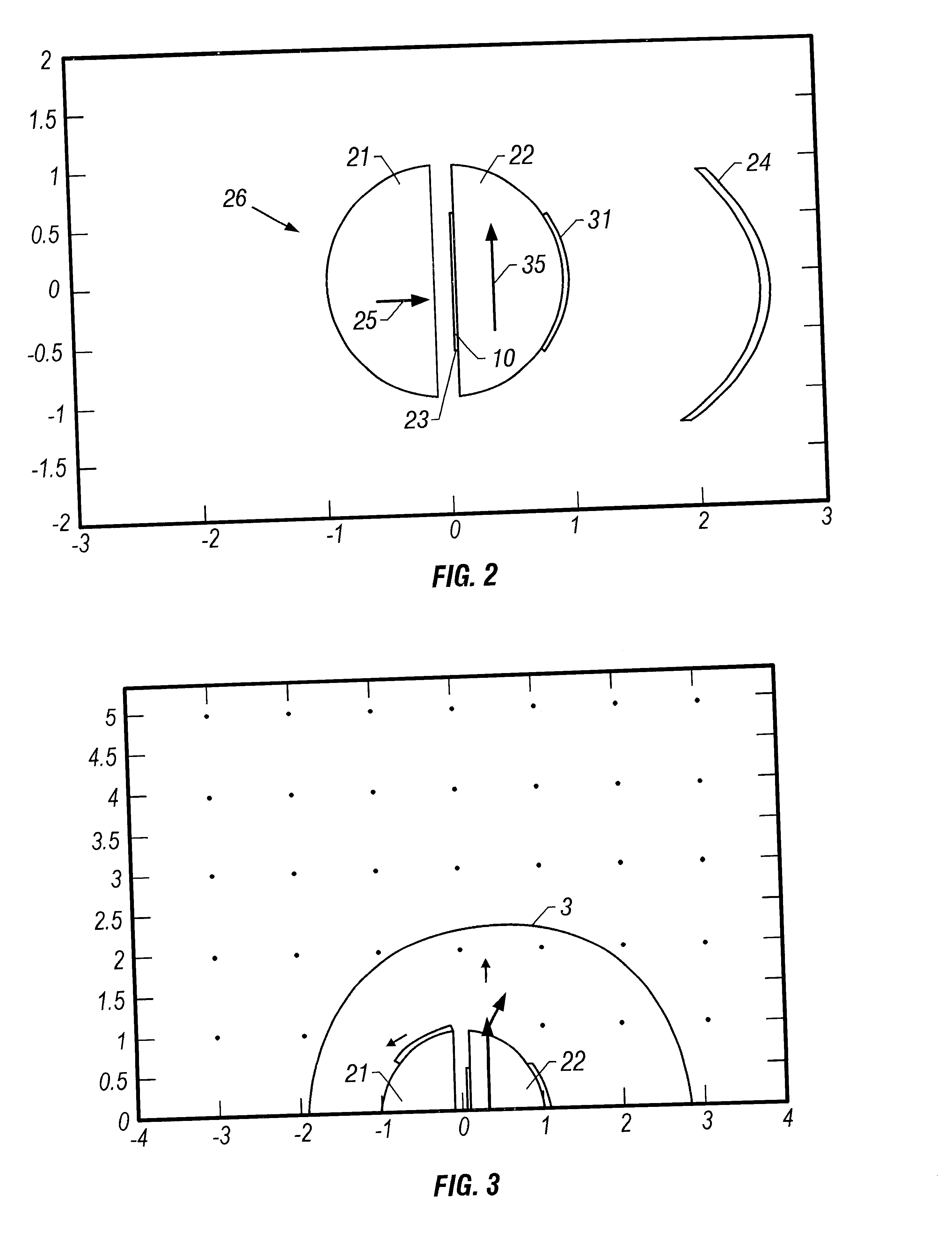Method and apparatus of using soft non-ferritic magnetic material in a nuclear magnetic resonance probe
a nuclear magnetic resonance and nonferritic magnetic material technology, applied in the field of nmr well logging instruments, can solve the problems of no provision, relatively low saturation flux density, and core saturation
- Summary
- Abstract
- Description
- Claims
- Application Information
AI Technical Summary
Benefits of technology
Problems solved by technology
Method used
Image
Examples
Embodiment Construction
FIG. 1, illustrates well logging tool string 1 having an NMR probe 2, having antenna assembly 4 deployed in bore hole 3. The NMR probe sends magnetic pulses into and receives signals from region of investigation 5 in formation 6. FIG. 1 is shown for purposes of showing an example of the orientation of a tool utilizing the present invention and is not intended to limit the use of the present invention to a particular application or orientation.
FIG. 2 illustrates a cross section of a preferred embodiment of the probe of the present invention, taken perpendicular to axis of elongation. The preferred embodiment of FIG. 2, comprises a probe 2, moveable through a bore hole 3 for measuring nuclear magnetic resonance (NMR) properties of a formation 6 surrounding the bore hole. The preferred probe comprises an elongated permanent magnet 21, having an axis of elongation extending parallel to the axis of elongation of the probe 2 and parallel to the longitudinal axis of the bore hole 3. The ax...
PUM
 Login to View More
Login to View More Abstract
Description
Claims
Application Information
 Login to View More
Login to View More - R&D
- Intellectual Property
- Life Sciences
- Materials
- Tech Scout
- Unparalleled Data Quality
- Higher Quality Content
- 60% Fewer Hallucinations
Browse by: Latest US Patents, China's latest patents, Technical Efficacy Thesaurus, Application Domain, Technology Topic, Popular Technical Reports.
© 2025 PatSnap. All rights reserved.Legal|Privacy policy|Modern Slavery Act Transparency Statement|Sitemap|About US| Contact US: help@patsnap.com



